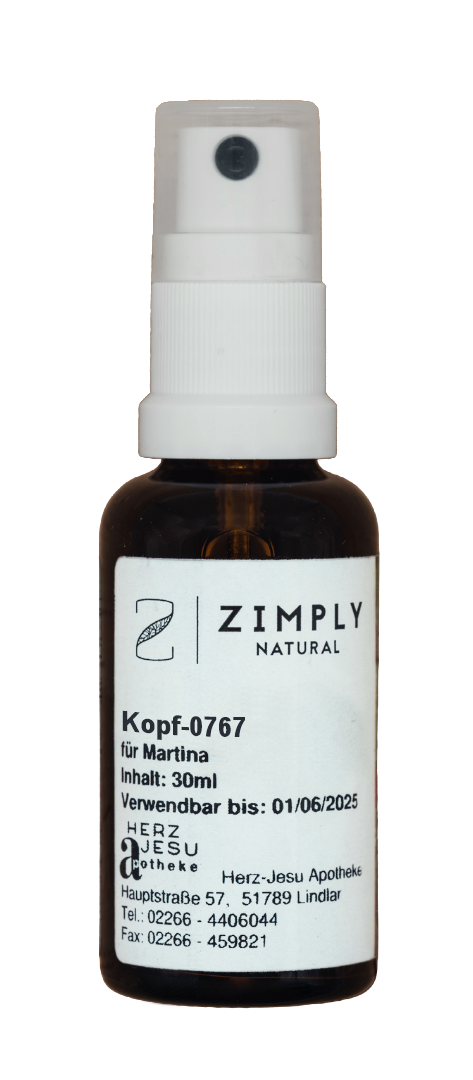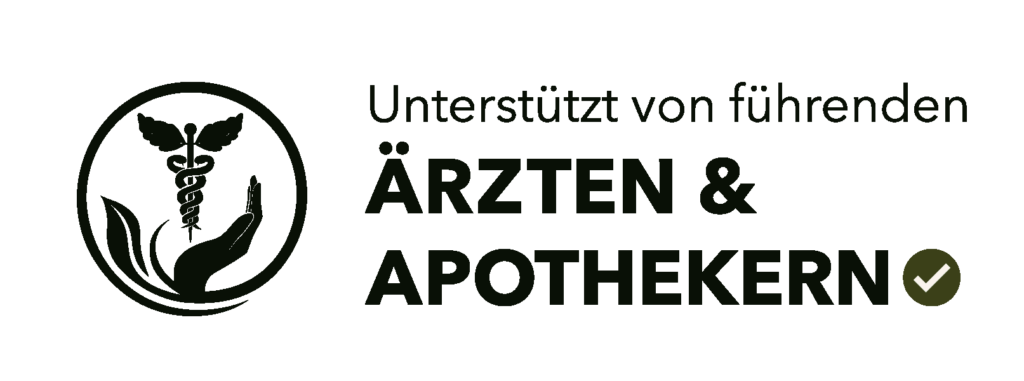
Your individual head mixture!
With natural methods such as the individual spagyric sprays from Zimply Natural, complaints can be treated and sustainably alleviated.
More than two thirds of all Germans complain about headaches. This makes headaches and back pain the most common illnesses in Germany and can certainly be described as a widespread disease.
Zimply Natural not only offers individual recipes to improve your health, but also provides you with all kinds of tips and information on this site, which should help you to understand the subject of your complaints in the best possible way.
The most important in a nutshell
Definition
Headaches are diffuse painful sensations in the area of the skull, which can occur either selectively or in the entire head area.
Causes
The most common causes of headaches include hormonal fluctuations, sensory stimuli such as light and noise, stress and alcohol. In sensitive people, frequent changes in the weather can also trigger headaches.
Symptoms
With regard to symptoms, it is important to distinguish which type of headache it is. If it is a primary headache, the typical symptoms are often bilateral or pressing headaches and, less commonly, sensitivity to light or noise. If it is a secondary headache, the pain is due to another condition, such as a cold or traumatic brain injury.
Measures
People are quick to reach for painkillers to relieve headaches, although this is not always immediately necessary or the best solution. Headaches can be relieved by rest, relaxation, essential oils or even a bath.

Discover our head spray
Natural methods such as Zimply Natural's individual spagyric sprays can provide long-term relief for both headaches and migraines.
Definition: Headache
Diffuse sensation of pain in the region of the skull
Headache is one of the most common pain syndromes encountered by physicians in daily clinical practice. Headaches can be attack-like, occasional or chronic and are divided into primary and secondary headaches. In primary headaches, the pain has no other cause. This means that the pain is the disease. Secondary headaches are different, where the headache is a concomitant of other illnesses, such as a cold or sinusitis.
Definition: Migraine
Seizure-like headache
Migraine is a disease of the brain that cannot be cured, but is easily treatable. Migraine is an attack-like headache that recurs at irregular intervals. Some people have a migraine attack only once or twice a year, while others are affected several times a month or almost every day. A migraine attack causes a sudden headache, usually on one side, often accompanied by accompanying symptoms such as loss of appetite, nausea or vomiting. There is a special form of migraine called migraine with aura. In 10-15 % of patients, visual disturbances or other symptoms occur, which can usually last up to 30 minutes.
Headache facts
Did you know that...
... headaches differ from region to region? In Augsburg, 24% suffer from tension headache, whereas in Dortmund only 17% do.
... migraine occurs three times more often in women than in men
... there are about 250 different types of headaches
... 300,000-500,000 people suffer from the so-called painkiller headache, this is a consequence of an excessive, ill-considered use of painkillers
This is what happens when you have a headache
Headaches have nothing to do with the brain, as it has no pain receptors. Therefore, the origin of the headache is outside the brain. Mainly, the headache occurs at the level of the nerves. When a headache occurs, intense pressure is exerted on the meninges and nerve pathways. In response to a trigger, blood vessels in the brain dilate and inflammatory proteins are released into the meninges.
How long can headaches last?
The duration of the headache can be completely different from person to person. For some it lasts only a few hours, for others several days and some people even suffer from headaches for several weeks.
A distinction is also made between episodic tension headache and chronic tension headache.
Episodic tension headache occurs occasionally but is ubiquitous. The patient suffers from recurrent severe pain and is usually "pain-free" in short intervals.
Chronic tension headache, on the other hand, lasts for a longer period of time and the patient suffers from pain permanently.
The 4 phases of migraine
The harbingers
The first phase is also called the prodromal phase. The prodromal phase begins a few hours to two days before the seizure. Common psychological complaints include depressive moods in the form of irritability, restlessness, or a mood high. Physical symptoms may include cravings for sweets or fats, extreme thirst, loss of appetite, drowsiness, fatigue or constipation.
The aura
10 to 15 % of migraine patients also suffer from an aura. The aura is a temporary neurological stimulus or loss of sensation. Common stimuli include visual disturbances, numbness, or tingling in the face or extremities. In some people, the aura also causes speech problems, dizziness or unsteadiness of gait. The duration of an aura can range from 15 to 60 minutes.
Headache & Migraine
The headache itself begins only after the aura, rarely headache and aura overlap. The pain phase is typically accompanied by symptoms such as nausea, vomiting, or sensitivity to light and noise. The pain itself usually begins on one side and spreads to the forehead, temples and eye area. It may also happen that the pain spreads to the other side. Many suffer from a general malaise during this phase. The pain phase can last between 4 and 72 hours.
Recreation
In the last phase, the migraine attack subsides. The recovery phase is characterized by fatigue and exhaustion.
Medical Advisory Board
The latest state of science


Especially in current times it needs more individuality and less 0815. Time for Zimply Natural!
Especially in current times it needs more individuality and less 0815. Time for Zimply Natural!
From light sensitivity to nausea - typical symptoms of the three most common headache types
The Tension headache is usually bilateral and pressing. The intensity is mild to medium and one suffers rather rarely from sensitivity to light or noise.
At the Migraine the symptoms are rather the opposite. People who suffer from migraines often suffer from a one-sided, pulsating pain. People with migraine are also exposed to light and noise sensitivity during an attack and also suffer from nausea and even vomiting.
The symptoms of the Cluster Headache do not resemble migraine or tension headache. People suffering from cluster headache have symptoms in the form of a red or watery eye, drooping eyelid, stuffy or runny nose, physical restlessness, urge to move and increased sweating in the face
Treat headaches naturally - this is how Zimply Natural can help you
To relieve your headaches, you don't have to resort to strong painkillers, because nature offers a variety of medicinal plants and herbs that can help you with your discomfort.
With Zimply Natural, you can create your personal headache remedy in just three minutes and then easily reorder it with your own remedy number. At Zimply Natural, we help you not only suppress your symptoms in the short term, but also benefit from a symptom-free and healthy normality in the long term.

